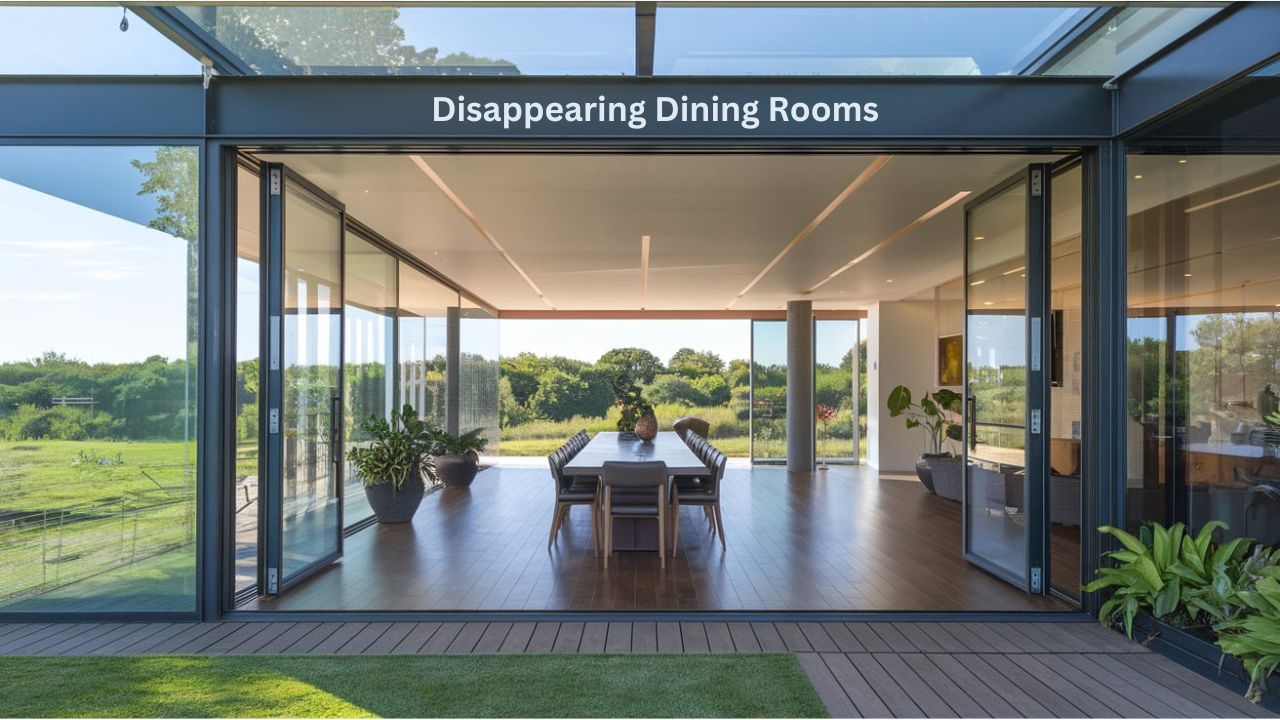Dining rooms, once the heart of family gatherings and festive celebrations, are gradually vanishing from modern homes. The trend of disappearing dining rooms reflects evolving lifestyles, changing space priorities, and the rise of multifunctional living areas. Homeowners are reimagining traditional spaces to suit their dynamic needs, transforming how we interact with our homes.
Why are dining rooms disappearing? This article delves into the reasons behind the shift, explores creative alternatives, and offers insights on how to adapt your space to fit this modern trend.
What Are Disappearing Dining Rooms?
Disappearing dining rooms refer to the growing trend where formal dining spaces are being phased out in favor of open-concept living or multipurpose areas. This design approach prioritizes flexibility, functionality, and lifestyle integration.
The Origins of the Dining Room
Historically, the dining room was a separate, often formal space reserved for meals and special occasions. In grand homes of the 18th and 19th centuries, the dining room symbolized wealth and social status. Fast forward to the mid-20th century, the dining room evolved into a more casual family space.
Today, however, shifting cultural norms and spatial constraints have made these rooms less relevant.
Why Are Dining Rooms Disappearing?
1. Open-Concept Living Takes Center Stage
Open floor plans have revolutionized home design, combining kitchens, living rooms, and dining areas into a seamless, unified space. Without walls, the need for a designated dining room diminishes.
2. Changing Lifestyles and Habits
Busy lifestyles and the rise of casual dining have reshaped how families eat. Many prefer quick meals at kitchen islands or on the go rather than formal sit-down dinners.
3. Real Estate Trends
Smaller homes and apartments prioritize space efficiency, often omitting formal dining areas to maximize square footage for living or working spaces.
4. Multipurpose Spaces Gain Popularity
Rooms now serve dual or even triple purposes. A dining room might also function as an office, playroom, or entertainment hub, leading to the phasing out of traditional dining setups.
The Rise of Multifunctional Spaces
1. Dining in the Kitchen
Kitchens equipped with large islands or eat-in nooks have replaced the need for separate dining rooms. These spaces combine functionality and intimacy, offering a practical solution for modern households.
2. Flexible Furniture Solutions
Foldable tables, extendable dining sets, and convertible furniture allow spaces to transition from dining to other uses effortlessly.
3. Living-Dining Hybrids
Integrating dining areas within living spaces is becoming common. For example, a stylish dining table surrounded by shelves and sofas blends dining and relaxation in one zone.
Designing Without a Dining Room
Losing a formal dining space doesn’t mean sacrificing style or function. Here’s how to adapt:
1. Embrace Open Floor Plans
Choose cohesive color schemes and furniture to define spaces without walls. Area rugs can help distinguish dining areas within open layouts.
2. Optimize Small Spaces
Install drop-leaf tables or wall-mounted desks that transform into dining surfaces when needed. Floating shelves provide storage for dining essentials.
3. Integrate Dining Into Other Rooms
Position a table near the kitchen or living room, ensuring it complements the décor. Lighting, like pendant lamps, can create a dining ambiance even in shared spaces.
The Impact on Home Value and Market Trends
1. Real Estate Appeal
While disappearing dining rooms reflect contemporary living, they may not appeal to all buyers. Families that cherish tradition might seek homes with formal dining spaces.
2. Adding Versatility
Flexible spaces can increase a home’s value by catering to a broader audience. Highlighting how a multipurpose room functions as a dining area can be a selling point.
Sustainability and Disappearing Dining Rooms
The shift towards multifunctional spaces often aligns with sustainable living practices. By reducing the need for additional furniture and square footage, homeowners can minimize their environmental footprint.
Is the Dining Room Gone for Good?
Not entirely. Some homeowners still appreciate the charm of a formal dining room for hosting dinners and celebrations. The trend reflects a balance between tradition and innovation, rather than a complete erasure of the dining room.
How to Decide If You Need a Dining Room
- Lifestyle Assessment: Do you host formal dinners regularly?
- Space Constraints: Is there room for a dedicated dining area?
- Design Preferences: Do you prefer a clean, open layout?
FAQs
What alternatives exist for dining rooms?
Kitchen islands, eat-in kitchens, and convertible spaces are popular alternatives to traditional dining rooms.
Do disappearing dining rooms affect home resale value?
It depends on the buyer. While some appreciate multifunctional spaces, others prefer traditional layouts.
How can I make a living-dining hybrid functional?
Use cohesive décor, flexible furniture, and strategic lighting to create a balanced space.
Are dining rooms completely outdated?
Not necessarily. They remain relevant for homeowners who prioritize hosting or value tradition.
What’s driving the disappearing dining room trend?
Key factors include changing lifestyles, space efficiency, and the rise of open-concept designs.
Can I add a dining area without a formal room?
Absolutely. Integrate a dining table into existing spaces using creative design solutions.
Conclusion
The trend of disappearing dining rooms reflects a shift towards more flexible, functional living spaces. While the traditional dining room may no longer dominate home layouts, its essence lives on through creative, multipurpose designs. Whether you embrace open-concept living or cherish formal dining, the choice ultimately depends on your lifestyle and needs.











